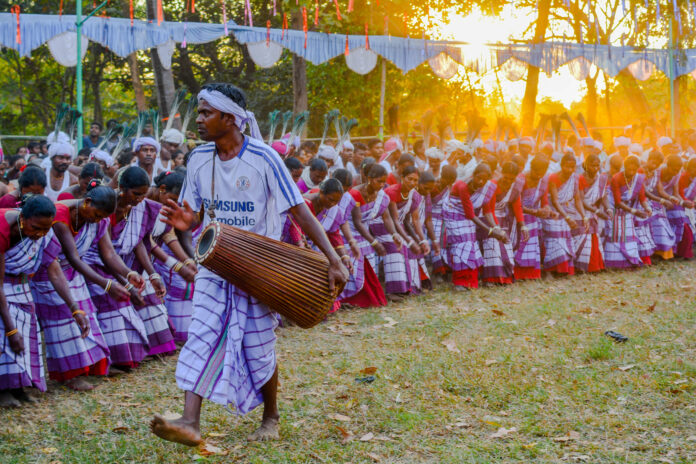It has been almost 73 years since our country attained territorial and political independence. However, something that Indian society is yet to attain is ‘the freedom of mind’. After a long haul, though we were able to overthrow our Colonial rulers, yet the ruled could not do away with the colonial mindset. Just like our colonizers had sown the seeds of derision for the Indian culture as a whole, in the post-independence era, mainstream Indian society is held captive to a similar mindset.
The way the Colonial rulers painted the picture of the tribes of India is still considered a standard frame of reference in the post-independence era. The colonial rulers had described indigenous communities as “barbaric” and “uncivilized” for their administrative convenience. Yet, even after attaining independence, mainstream society pictures the tribes the way they were portrayed by the alien rulers, and this has caused the attachment of derogatory connotation to terms like “Tribal” or “Adivasi” because it is assumed that the forest-dwellers are a community that is a backward community and lacks agency of their own to think and act in a civilized or progressive manner. This has resulted in the supremacy of one form of knowledge over the other. The knowledge produced by caste society is considered to be superior to alternative forms of knowledge, i.e., of non-caste communities (here: Indigenous communities). In the process of the capitalistic ‘development’ model promoted by the independent Indian state, there is a hierarchy in terms of who is defining such concepts. The mainstream idea of development is considered to be superior and progressive and is thus considered to be universal, leading to suppression of the indigenous idea of development. But is this really true? To be able to understand this better, we need to un-learn and re-learn a few things about indigenous communities.
Unique in Characteristics, United in Spirit
The umbrella term ‘indigenous’ or the communities that are commonly referred to as ‘tribes’ in the Indian context, is in reality a heterogeneous community. This means that each tribe has its own distinct language, diverse culture, and rich history. Though quite distinct from one another, indigenous communities have one thing in common: their struggle to protect their natural resources i.e., water, forest, and land (popularly known as ‘Jal’, ‘Jangal’ and ‘Jameen’ in the Chhotanagpur region). This struggle to protect their land and natural resources has become extremely crucial in contemporary times where our world is facing a grave threat of climate change. To add to it, we have a pandemic to deal with as well. We have all been witnesses to the overburdened medical system; this makes me wonder about all the progress that we have been running after. This situation of global crisis has compelled us to introspect and reflect on our ideas and models of development. At the outbreak of this pandemic in our country, while the whole nation was in chaos chasing after hand sanitizers, it was a pathbreaking development by the women of one of the indigenous communities of Chhattisgarh who were successful in making liquid hand sanitizer out of forest produce, the ‘mahua’ flower, which has been an integral part of the Adivasi lifestyle, a sustainable lifestyle.
The struggle of Jal, Jangal, Jameen
Adivasi/Tribal communities have always fought their battle to preserve their land, their home against imperial and capitalist interests. While the mainstream education teaches us that The First War of Independence was the Sepoy Mutiny (1857) and Mangal Pandey was one of the earliest freedom fighters, in reality, it was Tilka Majhi, a Santhal tribal leader who had waged the war against the Britishers, as early as in the 1700s followed by the ‘Santhal Hul’ (the Santhal Rebellion, 1855) and ‘Ulgulan’, a revolt headed by Bir Birsa Munda. In contemporary times, the situations have changed, but the struggle has not. In one of the recent interviews regarding the auction of coal blocks that fall under the tribal lands, the CM of Jharkhand, Mr. Hemant Soren had rightly pointed out that “The land and forests are their bank account, their ATM, their primary asset. You have to think of development keeping these things in mind…”
Just like the Colonial Rulers had described the ruled as “passive subjects”, conscious steps must be taken so that today, mainstream society does not do the same to Indigenous communities.
Ritu is pursuing her MA in Social Work in Dalit and Tribal Studies and Action at TISS, Mumbai.




[…] Indigenous Communities and Independent India’s Colonialism […]